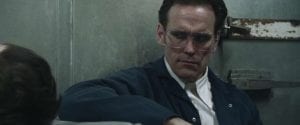Men wearing makeup? ‘I shouldn’t have to justify why I wear it.’
Thanks to Millennials and Generation Z, many masculine stereotypes are being demolished. There is a new wave of artistic and empowered men who are donning fake lashes, heavy eyeliner and even heavier wigs.
Harry Fripp, a student photographer and makeup lover based in London, tells Olivia Preston how definitions of the sexes are changing and his experience of delving into the world of drag.

Walking into Nando’s, wearing a full length fur coat, platform trainers and flashing his pink hair, Harry oozes confidence. His base makeup is flawless and his highlighter strikes me instantly. This use of cosmetics is something he does daily and has become part of his style. “My friends” he tells me, “say that I’d look like a normal person if I didn’t wear makeup.”
Harry, 19, who is originally from Surrey, describes it as being very different to London. If he goes out wearing mascara and foundation in his hometown compared to the capital city, he recalls how people often look at him. This is something that doesn’t bother Harry though; he explains how the people that he is with will notice them staring.“But I don’t care, he tells me in a self-assured way.
His makeup experimentation started at 16 and was inspired by Miss Fame (a drag performer who starred in season 7 of the award-winning reality show, RuPaul’s Drag Race) and Bella Hadid (an American model). This was around 2016, a time when Instagram and YouTube influencers like James Charles and Jeffree Star were becoming increasingly popular online.
Connecting with like-minded people

Today, there is a growing number of young men who are breaking norms surrounding gender and self expression. The technological revolution of the 2000s is allowing for new forms of masculinity to be explored. Social media, in Harry’s case helped him immensely, after growing up in a town where he didn’t have anyone that he identified with. He says, “I was the only gay person in my school really, I was able to go on social media and find a thousand other people who were in a similar position to me.”
From scrolling through posts and statuses, digital platforms allowed Harry, to connect with some of the queens who are part of the London drag scene. One of the more well-known friends of Harry’s is Paul (also know as Bones) who, at the time of meeting him had only been doing drag for 3 months. “Being friends with one queen made me friends with all of them.” says Harry, as he tucks into a chicken thigh. From meeting Bones, he made acquaintances with Smiley Vryus, Gothy Ken Doll and Baby Face, this also allowed him to get the opportunity to do some photography work at an event called Plaztik Party.
Harry has his own definition of ‘drag’, which is “glueing down” his eyebrows, however others consider him to be in drag constantly, since he wears makeup all the time. He has only been out wearing heavy makeup twice, both occasions he went to Heaven – a gay nightclub in Soho that he speaks highly of. He gets out his phone and shows me a picture of my makeup that night – he has an obvious talent for the art.
The new androgynous age
Men and boys wearing makeup is not something that is new. Historically, men have painted their nails, lightened their cheeks and darkened their eyes. Most notably, the Ancient Egyptians wore primitive eye liner and plucked their brows. More recently were the pop icons of the 1970’s and 80’s (including Prince and David Bowie) who, as Harry put it: reflected the “androgyny of men at the time, with flares and platforms. The rock bands all would wear makeup and Freddie Mercury too, they were all accepted back then.”

The media throughout the late 80’s right up until the beginning of the 2000s, provided young people with role models who reinforced hyper-masculine stereotypes. The popularity of Arnold Schwarzenegger and Bruce Willis as well as others, gave boys who were growing up then, only one model of how a man should be: tough, heterosexual, dominant and a real ‘man’s man’. To some extent this has all changed, with different versions of men now appearing, however some people still have negative opinions regarding Harry’s choice of fashion and expression.
Acceptance and challenges
When asked about his family’s attitudes towards wearing makeup use, he tells me how positive they were. He mentions that they had questions but reiterated that his mum was supportive constantly. He started off by stealing his older sister’s makeup and then was given a few items by her. “We went makeup shopping” he tells me, “and my mum got me some Mac stuff. It wasn’t my colour or anything but I couldn’t wait to put it on”.
Harry told me that because of how he looks, he has been assaulted twice, which is unfortunately all too common for those who differ from societies conventions. He mentioned being aware that if his older siblings had not been attending college when he did, that he would have gotten severely bullied. All this, has made him “want to wear makeup more.” He says that he shouldn’t have to justify why he wears it because “girls don’t have to.” His use of cosmetics is worn, “in a kind of ‘fuck you’ way in regards to what everyone thinks”.

